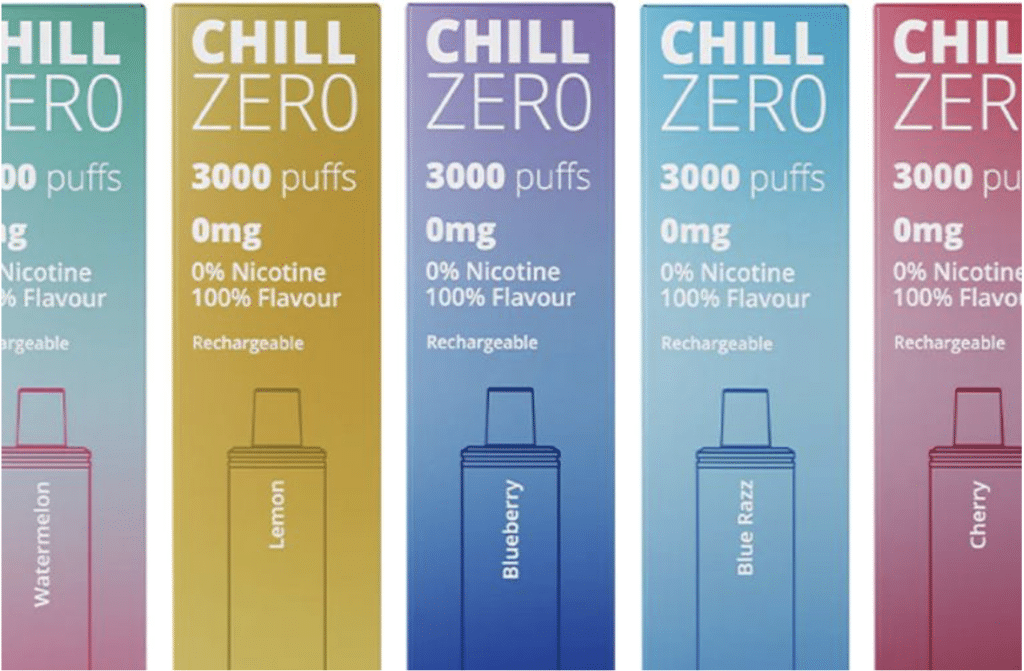Jonathan Swann is leading a large group of investors to make changes at the growing vape business.

Yesterday, the board of directors of Chill Brands (LON: CHLL) was sent a letter — an official notice to requisition a General Meeting. I am completely confident that my source, someone closer to major shareholders, is correct.
First up, as this information is now being distributed elsewhere, the board must RNS this information as soon as possible.
With investors awaiting key data on Chill Zero sales in the UK — and particularly reorder rates from Morrisons — it’s interesting that this letter appears to be targeted at the US side.
Chill Brands proposed resolutions
There are five resolutions being called for, which are as follows:
- Graham Duncan to be appointed director immediately.
- Aditya Chathli to be appointed director immediately.
- That, conditional on 1 or 2 being passed, Antonio Russo be removed as director immediately.
- That, conditional on 1 or 2 being passed, Trevor Taylor be removed as director immediately.
- That any person appointed as director between the date of the letter (16/4) and the GM, other than those named in 1 and 2, be removed immediately.
The Meeting is being called for by TR1 holder (with over 13% of shares in issue) Jonathan Swann, who is supported by 18 other large investors. When all their shareholdings are combined, this group controls 24% of the total issued shares in the company.
For context, passing these amendments (any or all) requires the standard 50.1% simple majority. Swann has made a significant personal investment into the business, including recent additional financial support in January.
The general problems with Russo and Taylor appear to be both financial discipline and corporate strategy, on the US side of the business.
The US business is perhaps being accused of draining cash — and with no immediate signs of recovery — a view supported by the last two sets of published accounts which saw combined operating losses close to £1 million, and total losses of over £10 million.
This is significant for a £19 million company.
In terms of corporate governance, I can assume the problem lies — perhaps among other issues — with the continual US strategy which involves pushing cannabis-based products more than Chill Zero vapes, which may compare unfavourably to the success of the Chill Zero rollout in the UK.
Where next for Chill Brands?
There does not seem to be any personal problems — this directorate change simply seems to be something major shareholders need to see, in order to cut costs and improve the ongoing strategy abroad.
While the share price suffered following the UK government decision to ban disposable vapes, it has since recovered to 3.8p, down only around 20% year-to-date and essentially flat over the past year.
Given the push to change the US strategy, this suggests upcoming RNSs on the UK side could be very positive. And as the legislation to ban disposable vapes is not expected to be passed for some months, and the government will issue a six month buffer zone when it comes into effect, it may be at least a year until this legislative change makes a difference to Chill.
Regardless, I still expect the proposed legislation to be revisited by saner minds post-General Election.
For perspective, Australia’s ban on disposable vapes has been an unmitigated disaster as the market has simply been flooded with unregulated knockoffs. The new law is also seemingly tied into the somewhat insane legislation, just passed, which will stop anyone born after 1 January 2009 from being able to buy tobacco — a position that New Zealand recently reversed.
Because if the war on drugs has taught us anything, it’s that prohibition works.
Chill has also been working hard on non-disposable options (you can also argue its current ‘disposable’ vapes are differentiated from typical products, but that’s a case for a VAT lawyer). And in any event, the new tax on vapes will give the company an even larger competitive edge.
As a reminder, nicotine free vapes will be taxed an additional £1, vapes with less than 11mg nicotine at £2, and vapes with more than 11mg nicotine at £3 — per 10ml of liquid. The OBR has calculated that this will double the price of a high nicotine product from £3 to £6.
This provides a further financial incentive to buy Chill vapes, which already offer better value in terms of price per puff.
But in the end analysis, once this meeting is concluded, and with new directors on board, investors should be looking to Q2 RNSs which should clue them in the relative state of the UK-side success.
This article has been prepared for information purposes only by Charles Archer. It does not constitute advice, and no party accepts any liability for either accuracy or for investing decisions made using the information provided.
Further, it is not intended for distribution to, or use by, any person in any country or jurisdiction where such distribution or use would be contrary to local law or regulation.
